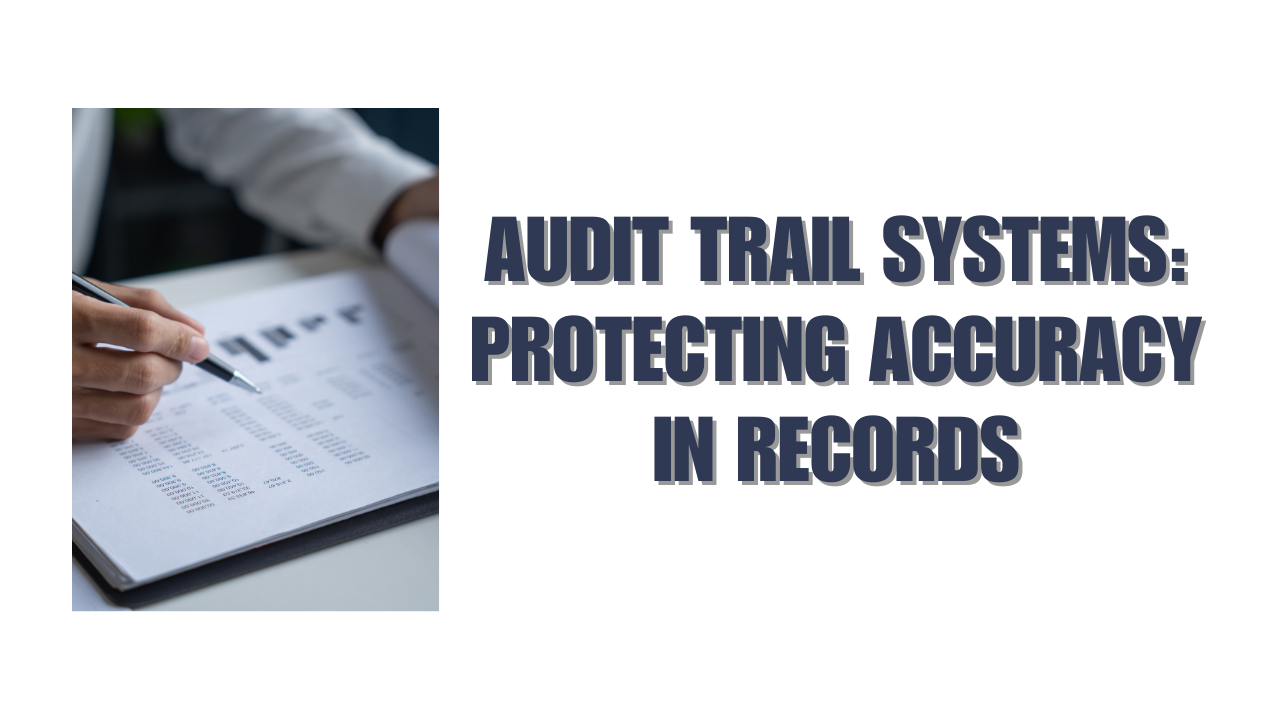In modern business, accurate records are the backbone of financial integrity, regulatory compliance, and corporate governance. Mistakes, omissions, or deliberate manipulations can undermine stakeholder trust, trigger regulatory penalties, and compromise operational decision-making. Audit trail systems play a critical role in safeguarding the integrity of organizational records, ensuring that every transaction, change, or adjustment is traceable and verifiable.
For executives, boards, and finance teams, understanding the importance of audit trail systems is essential for maintaining accurate, reliable, and actionable records.
What Are Audit Trail Systems?
An audit trail system is a digital or manual framework that records all actions and changes related to financial, operational, or regulatory data. Each entry typically captures:
- Who made the change (user ID or employee).
- What was changed (transaction, document, or system record).
- When the change occurred (timestamp).
- Why the change was made (notes or approval).
Audit trail systems provide a chronological, tamper-evident record that enhances accountability, transparency, and oversight.
Why Accuracy in Records Matters
Accurate records are vital for multiple reasons:
- Regulatory Compliance: Financial statements, tax reporting, and operational records must meet legal standards.
- Decision-Making: Leadership relies on reliable data to make strategic, operational, and financial decisions.
- Fraud Prevention: Accurate, traceable records help detect unauthorized or fraudulent activity.
- Stakeholder Confidence: Investors, lenders, and auditors trust organizations that maintain reliable and transparent records.
Without robust audit trail systems, organizations risk errors, misstatements, and compromised governance.
Common Risks to Record Accuracy
Even with sophisticated systems, records are vulnerable to several risks:
1. Human Error
Manual data entry, calculation mistakes, or overlooked adjustments can introduce inaccuracies.
2. Unauthorized Changes
Employees or third parties with inappropriate access can alter records without oversight.
3. System Vulnerabilities
Software bugs, misconfigurations, or cyberattacks may corrupt data integrity.
4. Incomplete Documentation
Records lacking context or explanation make it difficult to trace the rationale for changes.
5. Data Migration Challenges
Transferring information between systems without validation can lead to inconsistencies or lost audit history.
Recognizing these risks is the first step toward implementing effective safeguards.
How Audit Trail Systems Protect Record Accuracy
Modern audit trail systems employ multiple mechanisms to ensure data integrity and transparency:
1. Tamper-Evident Records
Every action or change is logged, creating a permanent trail. Unauthorized modifications are detectable, protecting the integrity of financial and operational data.
2. User Accountability
Each entry is associated with a specific user, which fosters responsibility and reduces the likelihood of errors or unauthorized adjustments.
3. Automated Logging
Digital audit trail systems automatically capture data changes in real time, reducing reliance on manual recording and minimizing human error.
4. Version Control
Audit trail systems track changes across multiple iterations, allowing organizations to review historical data, identify corrections, and validate final records.
5. Centralized Access and Monitoring
Centralized audit trail systems consolidate records from multiple departments or systems, making it easier for auditors and leadership to monitor activity, detect anomalies, and reconcile data.
Best Practices for Implementing Audit Trail Systems
To maximize the benefits of audit trail systems, organizations should adopt the following practices:
1. Define Clear Policies and Procedures
Establish formal protocols for data entry, change approvals, and record management. This ensures consistency and accountability across the organization.
2. Implement Role-Based Access Controls
Restrict access based on roles and responsibilities. Multi-factor authentication and periodic access reviews enhance security.
3. Regular Reconciliation and Verification
Compare audit trail records with source documents, system outputs, and financial statements to identify discrepancies and validate accuracy.
4. Continuous Monitoring and Alerts
Deploy automated alerts for unusual activity, such as high-value adjustments or multiple changes within a short period, to catch errors or irregularities early.
5. Integrate With Risk Management
Audit trail systems should feed into broader risk management frameworks, enabling proactive identification of vulnerabilities or process weaknesses.
6. Employee Training
Educate staff on the importance of accurate record-keeping, proper system usage, and adherence to audit trail protocols.
Benefits of Robust Audit Trail Systems
Implementing effective audit trail systems offers significant advantages:
- Accuracy and Reliability: Ensures that all transactions and records are correctly captured and verifiable.
- Regulatory Compliance: Supports adherence to accounting standards, tax laws, and reporting requirements.
- Fraud Detection: Enables early identification of unauthorized or suspicious activity.
- Operational Efficiency: Streamlines audits, reconciliations, and reporting processes.
- Enhanced Stakeholder Confidence: Transparent and reliable records increase trust among investors, boards, and regulators.
These benefits demonstrate that audit trail systems are not just tools for compliance-they are strategic assets for business integrity and governance.
Real-World Application: Audit Trail Systems in Action
A mid-sized technology firm implemented a centralized digital audit trail system to manage financial transactions across multiple business units.
During a routine internal audit:
- The system identified duplicate invoice entries that had previously gone unnoticed.
- Audit trail records allowed the finance team to trace each entry to its origin, correct the error, and implement process improvements.
- The company demonstrated compliance with regulatory requirements while improving the accuracy of its monthly financial reporting.
This example illustrates how audit trail systems protect accuracy, enhance governance, and enable actionable insights.
Emerging Trends in Audit Trail Systems
The evolution of digital technology continues to strengthen audit trail capabilities:
- Cloud-Based Platforms: Provide real-time access, secure storage, and centralized control over records.
- Artificial Intelligence: Detects anomalies and patterns that may indicate errors or fraud.
- Blockchain Technology: Creates immutable, tamper-proof audit trails for maximum transparency.
- Integration With ERP Systems: Ensures seamless data flow and accurate record-keeping across all business processes.
These innovations position audit trail systems as critical enablers of both operational efficiency and compliance.
Conclusion
Accurate records are the foundation of reliable financial reporting, regulatory compliance, and corporate governance. Audit trail systems safeguard this accuracy by providing transparent, tamper-evident, and verifiable records of all transactions and changes.
At Aurora Financials, we help organizations implement robust audit trail systems that enhance data integrity, streamline audits, and support strategic decision-making. In a world where accuracy and accountability are non-negotiable, audit trail systems are more than just compliance tools-they are essential for building trust, mitigating risk, and driving sustainable business growth.






